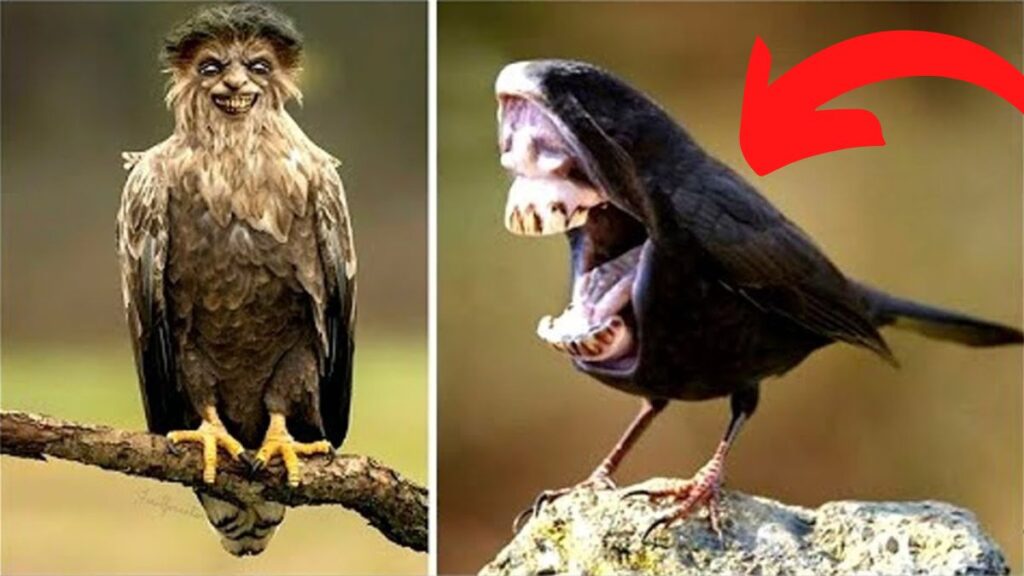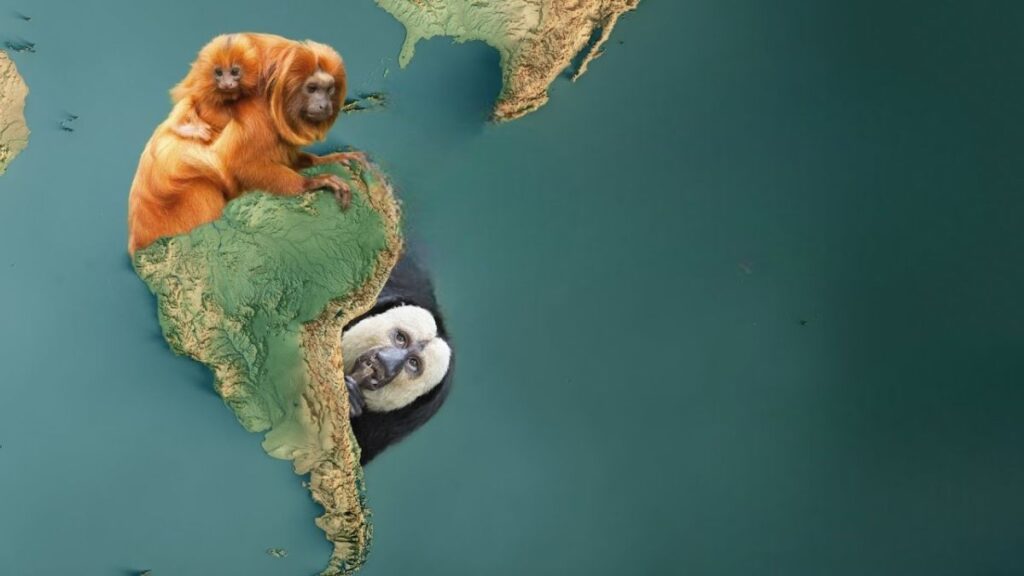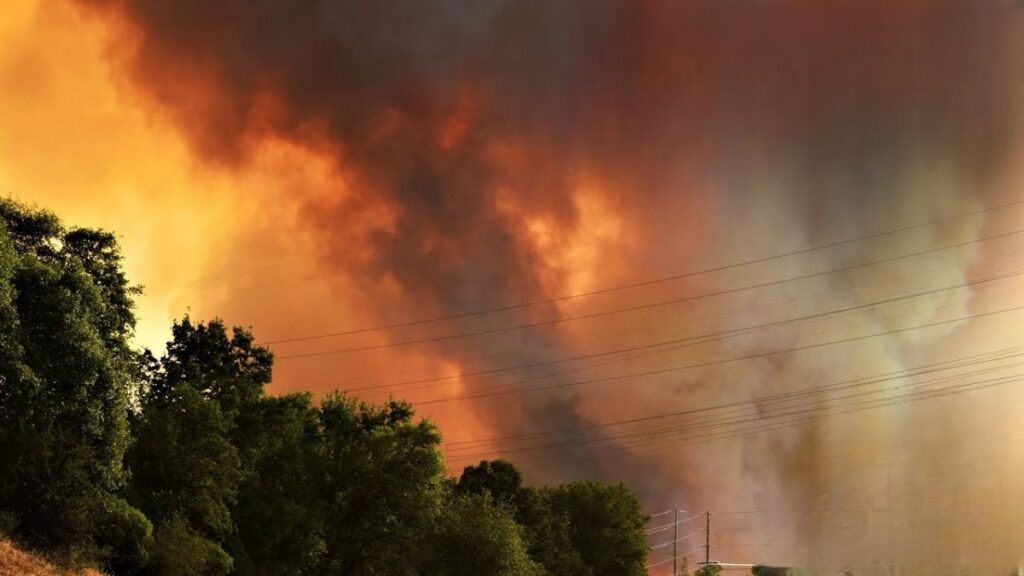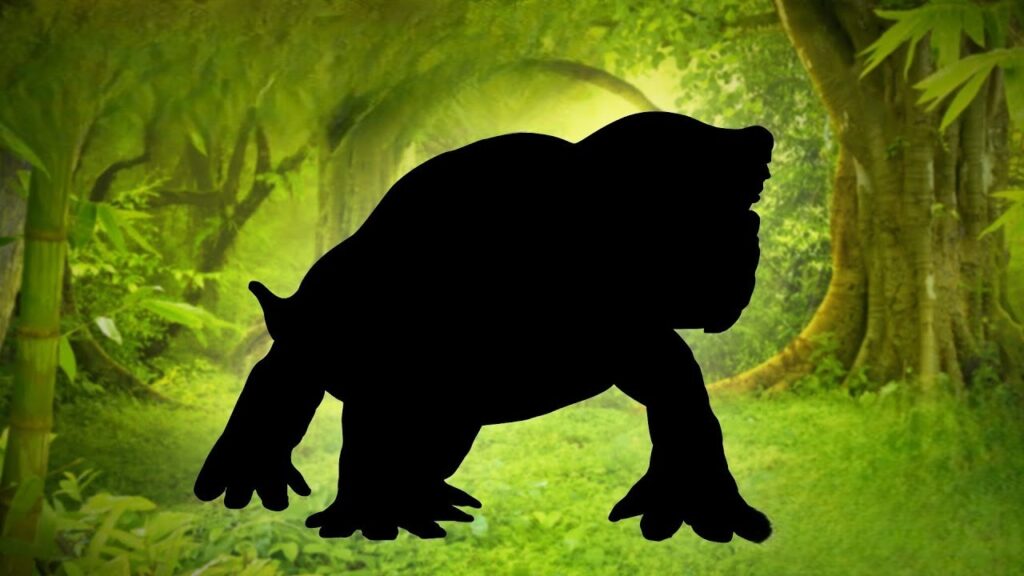
Many people think of birds as cute and harmless, but did you know that some of them can be dangerous? There are a lot of birds that you shouldn’t mess with because they have powerful beaks that can break bones and talons that can cut through flesh. In this video, we’ll examine some of the world’s most dangerous birds and learn why they are so dangerous.
1. The African ostrich
The majority of people imagine ostriches as a flightless bird with long legs and silky appearance. However, the African ostrich is a dangerous bird that can be extremely dangerous if provoked, so don’t be fooled by their appearance. This massive bird can travel at speeds of up to 72 kilometers per hour or 45 miles per hour, making it one of the fastest two-legged creatures. Predators and even humans can be killed with one powerful kick. Ostriches are dangerous not only because of their legs, but also because they have a sharp, powerful beak that they use for foraging and self-defense. If threatened, they can quickly impale an opponent with a single strike. The African ostrich’s razor-sharp claws, as if that weren’t bad enough, can be a terrible foe. Even though African ostriches may appear enormous and silly, it is essential to remain vigilant when in their vicinity. They are without a doubt one of the world’s most dangerous birds.
2. The red-tailed hawk
The red-tailed hawk is a common sight in the skies, with its distinctive red tail and piercing eyes. But are you aware that this bird has a lot more to it than meets the eye? First, how it looks in real life. The red-tailed hawk has a wingspan of up to four feet and is a medium-sized bird of prey. This bird stands out from other birds of prey thanks to its distinctive rusty red tail, which can be seen while flying, as the name suggests. The red-tailed hawk can be found in a variety of settings, including forests, urban areas, deserts, and grasslands.
Vocalization is one of the red-tailed hawk’s most fascinating characteristics. Their piercing, loud call can be heard for miles. Red-tailed hawks frequently use this call to communicate with other birds and establish territory.
Let’s discuss what makes this bird such an adept hunter. The red-tailed hawk is able to spot its prey from a great distance thanks to its excellent vision. It kills its prey with its razor-sharp beak and powerful talons. They will consume a variety of small mammals, reptiles, birds, and even dead animals because they are opportunistic feeders. In the grand scheme of things, hawks rarely attack or hunt humans, but there have been a few cases that have been documented. A red-tailed hawk attacked several people in New York City in 2001, including a baby in a stroller. Despite its beauty, the red hawk should be kept at a safe distance to avoid being attacked.
3. The African oxpecker
You might have observed this bird gnawing on ticks and other parasites while perched on the backs of large mammals like buffalo, zebra, and giraffe. However, did you know that the African oxpecker is actually a dangerous bird? Yes, that is correct; these small birds are well-known for their aggressive behavior toward humans and other animals. They are known to injure and bleed from attacks on large mammals’ eyes and ears. They may appear to be assisting the animal by eliminating parasites, but in reality, they frequently cause more harm than good. The pecking can get so bad that it leaves wounds open, which can get infected. This can result in the animal’s death in severe cases. The African oxpecker poses a threat to humans as well. They have a history of attacking individuals, particularly when they feel threatened. With their razor-sharp beaks and claws, these birds are a force to be reckoned with who can inflict serious harm. So keep in mind that an African oxpecker is more than just a pretty little bird perched on the back of an animal. The next time you see one, know that it is a dangerous predator that could cause a lot of harm.
4. The Marabou stork
A bird that many of us may have seen but need more information about is next. The bald head, long legs, and massive wingspan of the Marabou stork, which lives in Africa, make it recognizable. The Marabou stork, on the other hand, is both a fascinating and dangerous bird. Yes, that’s right; Marabou storks are well-known for their aggressive behavior, particularly toward other animals, despite their harmless appearance. They are a formidable predator because they are known to attack smaller birds and even steal their prey. These birds also scavenge their prey. They are known as the “undertakers of the skies” because they eat carcasses and animals that have died. In addition, Marabou storks pose a threat to humans. With their razor-sharp beaks and claws, they have been known to attack people who get too close to their nests, causing serious injuries. They have even been known to steal food from people in some instances, making them a nuisance and a threat. Therefore, the next time you see a Marabou stork, keep in mind that it is not simply a large, harmless bird. Respect and a safe distance should be maintained from this dangerous predator.
5. The bearded vulture
A large bird of prey found in the mountains of Europe, Africa, and Asia, they are also known as the Lamborghini. It’s hard to miss with its distinctive black feathers that look like beards. But did you know that this strange and majestic bird hides a very vicious animal? Bearded vultures are known for their aggressive behavior despite their gentle appearance.
They have been known to attack goats and lambs, injuring them severely or even killing them. Bearded vultures are also well-known for their propensity for scavenging, but that’s not all. They can break open bones, which make up about 70% of their diet, to get to the marrow inside thanks to their powerful beaks and razor-sharp claws. Because of this, they pose a threat to livestock and other animals that are unable to defend themselves. In addition, bearded vultures pose a threat to humans, which is not enough. In point of fact, historically, the bearded vulture was regarded as a danger. People were under the impression that they caught and killed livestock babies. In the Alps, where they have recently been reintroduced after being hunted and eradicated due to this, they were killed. You don’t want to be on their bad side because their sharp beaks and talons can cause serious harm.
6. The harpy eagle
Even larger than the golden eagle, the harpy eagle is America’s largest and most powerful raptor. The harpies, mythological creatures in the form of a bird with a human face, are the source of its name. The formidable talons of this magnificent predator are renowned for easily breaking bones. Despite its size and strength, the harpy eagle, which lives in the rainforests of Central and South America, is known to be deadly. Due to its enormous size and ability to hunt, the harpy eagle is thought to be dangerous. The harpy eagle has a wingspan of up to six feet, a powerful beak, and talons that are razor-sharp, making it easy for it to kill large animals like sloths and monkeys. The harpy eagle is a formidable predator in its jungle habitat because of its size, strength, and hunting prowess. The bird’s reputation for being dangerous is further bolstered by the fact that it is not shy and has been known to attack humans when it feels threatened. However, it is essential to keep in mind that harpy eagles are not naturally aggressive and will only act aggressively if they believe their young or nest are in jeopardy.
7. Cassowary
The cassowary is one of the most dangerous birds in the world because of its deadly claws and striking black feathers. With its intimidating presence and unpredictable behavior, this formidable creature, which is native to the dense tropical forests of Australia and New Guinea, commands respect as well as fear. The cassowary is a large bird that can weigh up to 140 pounds and stands over five feet tall. It has three razor-sharp claws on its massive legs, the longest of which can be up to four inches long. The bird is a formidable opponent due to its agility and lightning-fast movements in addition to its deadly arsenal. But the cassowary is a dangerous bird for more reasons than just its looks. Its eccentric conduct adds an additional layer of risk for the people who try to cross its way.
It is known that cassowaries live alone and are fiercely protective of their territory and young. They are known to attack with deadly precision when threatened, using their powerful legs and claws to scare their enemies. The cassowary is still an important and beautiful part of the world’s ecosystem, despite its terrifying reputation. As the forest’s gardener, it is essential in the distribution of seeds and the upkeep of healthy ecosystems. However, the next time you are in the lush tropical forests of Australia or New Guinea, you should respect the cassowary’s place as one of the most dangerous birds in the world and give it a wide berth.
8. The Peregrine Falcon
This sleek, powerful bird is known for its incredible speed, agility, and hunting skills. It is a master of the skies. The peregrine falcon is a formidable aerial force with wings that are more than two feet long. This bird is one of the fastest animals on Earth because it can hunt at speeds of over 200 mph. It is a deadly predator with sharp eyesight and razor-sharp talons that can easily kill prey that is much larger than it is. The Peregrine Falcon is dangerous for more reasons than just its physical prowess. Additionally, its shrewd mind and unwavering determination. This bird is an expert hunter who outwits its prey by using its speed and agility. It frequently takes to the skies to look for its next meal while flying high in the air. It will dive at an incredible rate when it spots its target and use its talons to grab its prey in midair.
Additionally, the Peregrine Falcon is a ferocious protector of its territory. It will attack any bird or human that gets too close to its nest that threatens its nest. This bird is extremely dangerous because it will stop at nothing to protect its young. In a nutshell, the Peregrine Falcon is a terrifying predator that embodies both power and danger. Additionally, if you ever come across a Peregrine Falcon in the wild, you will be confronted with a true natural phenomenon.
9. The Osprey
Ospreys, also known as Seahawks, are magnificent birds of prey that can be found in North America, Europe, and Australia, among other places. They are adored for their beauty and ability to hunt, but they can also be extremely dangerous to humans. Sharp talons and beaks are one of the primary reasons Ospreys can be dangerous. These birds use their beaks to break up their food and their talons to hold onto their prey. Ospreys may use their talons and beaks to defend themselves when they feel threatened, which can cause serious injuries to humans. Ospreys’ propensity to dive bomb when they sense that their nests or young are in danger is another reason why they can be dangerous. Ospreys will fiercely defend their nests against any perceived threats because they are extremely protective of them. When humans or other animals get too close to their nests, the birds may swoop down and attack. Ospreys are able to transmit diseases to humans in addition to their physical abilities. Ospreys consume fish, most frequently sick or dead fish contaminated with harmful viruses and bacteria. There is a possibility that a person could contract a disease if they come into contact with an osprey that was fed contaminated fish. Ospreys are beautiful and fascinating birds in general, but they can also be dangerous to humans. As a result, it’s critical to respect their space and not disturb their young or nests. Additionally, if you do come across an Osprey, it is best to remain at a safe distance and not approach them.
10. The Northern Crested Penguin
Don’t let the charming crest and black-and-white feathers of these flightless birds fool you into thinking they are cute and cuddly. They have a dangerous combination of sharp beaks, disease-ridden bodies, and clumsiness that can turn any encounter into a potential disaster. This feathered menace is not as homely as they appear to be. It can deliver a painful bite that can have a long-lasting impact thanks to its beak, which was made to pull fish from the icy waters. As if that weren’t bad enough, these birds also carry mites, lice, and avian influenza, all of which can easily infect humans and cause serious health problems. However, the Northern Crested Penguin’s dangers do not end there. These birds are known to cause falls and tripping hazards while walking on land, making even a leisurely stroll risky. Numerous mishaps have occurred as a result of their lack of coordination and grace, resulting in people tripping and falling in their path. Keep a safe distance from these birds and treat them with the respect they deserve, as we suggest. Ultimately, it is always preferable to be safe than sorry.
11. The Snowy Owl
Although these birds may appear to be tranquil tundra sentinels with their pristine white feathers and piercing yellow eyes, they are actually formidable hunters with razor-sharp talons and a powerful beak, making them one of the most dangerous birds in the Arctic tundra. Their beak, which is used to break up its food, can cause serious injury with a single bite, and their talons, which are designed to grasp and hold onto the prey, can deliver a crushing blow that can easily penetrate the skin. A Snowy Owl won’t hesitate to defend itself if it feels threatened, putting those who get too close in danger.
12. The Northern Garnet
The Northern Garnet is a dangerous bird that also knows how to cause trouble and is a master of mischief. This bird is not to be taken lightly because of its piercing red eyes, sharp beak, and powerful talons. As it bravely soars through the sky and swoops down to snatch its prey with lightning-fast precision, its garnet-colored feathers shine with a dangerous gleam in the sunlight. It’s not just the Northern Garnet’s appearance that makes it dangerous. No, this bird is an expert strategist who can deceive even experienced hunters with its sharp intelligence. It never hesitates to use its sharp talons and beak as weapons and has a cunning mind that keeps it one step ahead of its adversaries. As a result, proceed with caution because the Northern Garnet is not a bird to be taken lightly. Those who cross its path will undoubtedly feel bad about it.
13. The Winged Goose
Have you ever had a chicken chase you? A winged goose’s chase, on the other hand, is nothing compared to that. Due to its seemingly benign appearance, the Winged Goose, also known as the Ansera forms, is a species of waterfowl that is frequently overlooked. The Winged Goose, on the other hand, is a highly lethal bird that should not be underestimated. The powerful wingspan of the Winged Goose, which can reach up to six feet in length, is one of the main reasons why it is considered dangerous. The Winged Goose has large wings, allowing it to fly at high speeds and causing significant harm to any animal or human in its path. Additionally, the Winged Goose’s sharp tips make it possible for it to use its wings as weapons to protect itself and its offspring from predators. In addition, during the breeding season, the Winged Goose is prone to becoming territorial and will fiercely defend its nest and offspring against any perceived threats. In order to safeguard its young, the bird has been known to attack humans and other animals, including dogs and other waterfowl.
14. The Pelican
The Pelican is often portrayed as a gentle and comical bird because of its distinctive large bill and pouch. However, as you are about to learn, there is more to this water bird than meets the eye. The pelican is well-known for its ability to catch its prey with its long, sharp, hooked bill, which can reach 18 inches in length. However, this bill can be used for more than just fishing; it can also be used as a weapon to protect itself from potential predators and anyone who has the guts to disturb it during its breeding season. In point of fact, eyewitnesses have reported that the Pelican strikes with its painful bill, injuring both animals and people. The Pelican is a dangerous bird, so don’t be fooled by its gentle appearance.
15. The Hooded Pitahui
The Hooded Pitohui is one of the most dangerous birds in the world, despite its striking colors giving it the appearance of being harmless. Homobatrakotoxin is a highly toxic substance found in the feathers of the Hooded Pitohui. Small animals and birds that come into contact with this substance may experience paralysis or even death as a result of its extreme toxicity. If that isn’t enough to scare you, the Hooded Pitohui also has a beak strong enough to break open hard nuts and fruits and razor-sharp talons that can cause serious injury. The Hooded Pitohui is a beautiful but dangerous bird that should be observed safely from a distance. Keep in mind that the bird’s poisonous oil can cause serious health issues and even death, so it is best to leave it alone and let it free roam in its natural environment.
16. The Australian Magpie
The Australian Magpie attacks animals and people who get too close to its territory with its razor-sharp beaks, which can result in swooping. These assaults can be painful and risky, especially for cyclists and young children. In fact, Magpie attacks have been blamed for people falling off their bikes or getting seriously hurt. So, how can you keep a Magpie from attacking you? When walking or biking near Magpie nesting sites, Park Rangers recommend that you protect yourself by wearing a hat or carrying an umbrella. During the breeding season, you can also stay away from areas with a lot of Magpies.
17. The mute swan
Mute swans are a sight to behold with their long necks, pristine white feathers, and elegant posture. However, these birds can be dangerous, especially when they feel threatened, despite their peaceful appearance. Mute swans will use everything they have to protect their territory because they are so fiercely protective of it. They have been known to attack people, pets, and even boats that get too close to where they build their nests. These attacks can be painful and even dangerous due to their large and powerful beaks.
18. The bald eagle
A bald eagle is probably something you’ve seen or held if you’ve ever seen a dollar bill. However, bald eagles are truly a sight to behold, and in addition to being featured on the Seal of the United States, they also have powerful wings, striking whiteheads, and the ability to fiercely hunt. However, these birds can also be extremely dangerous, despite their majestic appearance. Fish and other prey are caught by bald eagles with their strong, sharp talons. Bald eagles will use everything they have to protect their territory because they are so fiercely protective of it. Humans, pets, and even drones that get too close to their nests have been the targets of their attacks. These attacks can be painful and even dangerous in some cases. Avoid them and take in their beauty from a safe distance.
19. The American Herring Gull
You could consider seagulls charming and innocuous birds that follow fishing boats for a free feast, yet the American Herring Gull is something else entirely. These birds can grow up to 22 crawls long and gauge up to 2.5 pounds, making them one of the biggest gull species on the planet. Also, with that size comes some serious power. American Herring gulls are known for their forceful and regional way of behaving. They will guard their homes and taking care of regions from saw dangers and won’t hold back to go after people or different creatures that come excessively close. These assaults can bring about serious injury, and it’s normal for the gulls to utilize areas of strength for them and sharp claws to go after their casualties’ eyes, face, and head. In any case, that is not all. American Herring gulls are additionally infamous for their capacity to take food. They have been known to dip down and grab food right no longer any of individuals’ concern, and they’ve been known to accept food from different birds also. They’ve even been known to take food from outdoor tables and garbage bins, and they won’t hesitate to utilize their solidarity and size for their potential benefit. In the event that you’re in a space where gulls are known to be an issue, be aware of your environmental elements and keep your food covered. Furthermore, in the event that a gull assaults, attempt to cover your head and face and step back leisurely, as unexpected developments can set off their senses to assault.
20. The Emu
In case you are unfamiliar, emus are large, flightless birds similar to ostriches. At first glance, they may appear harmless and cute. However, emus can be extremely dangerous when they feel threatened, and looks can be deceiving. Emus are well-known for their speed. With their long legs and powerful feet, they can run up to 50 miles per hour and deliver powerful kicks. In point of fact, their kicks are so potent that they have been known to break bones and injure people and other animals severely. In addition, they are extremely aggressive and territorial, attacking any animal or person who gets too close to them for comfort. They will defend themselves with their powerful beaks and razor-sharp talons, and their attacks can be sudden and unexpected.
That finishes today’s list of the 20 most deadly birds you should avoid.

![Moon Jellyfish has [ Hidden Secrets ] You don't know moon jellyfish](https://spaceupper.com/wp-content/uploads/2022/11/1-1-300x169.jpg)









